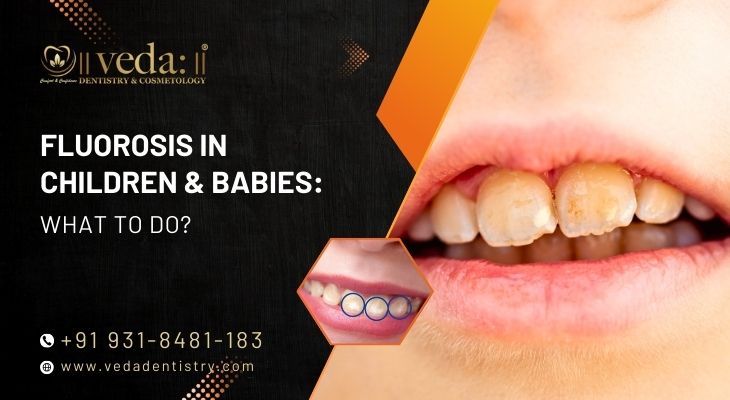
Fluorosis in Children and Babies: What Should Parents Do?
As parents, seeing a beautiful, healthy smile on your child’s face is priceless. But sometimes, despite your best efforts, you might notice white streaks or spots appearing on your child’s teeth. These unusual markings could be a sign of fluorosis, something many parents aren’t familiar with until it shows up in their own family. But don't panic—fluorosis is manageable, and we're here to help you understand what it is, why it happens, and what you can do about it.
What is Fluorosis?
Fluorosis happens when your child's teeth are exposed to too much fluoride while they're still developing under the gums, typically up until the age of eight. Fluoride is essential in small doses—it helps strengthen teeth and prevent cavities.
However, too much of it can lead to fluorosis, causing changes to the tooth enamel. Usually, fluorosis is mild and looks like tiny white spots or streaks. In more severe cases, teeth can develop darker stains and at times, uneven surfaces.
How Do Babies and Children Get Too Much Fluoride?
You might be wondering how babies and young kids could possibly get too much fluoride. Here are some common ways:
Swallowing toothpaste: Young kids often swallow toothpaste instead of spitting it out, increasing fluoride exposure.
Fluoridated water: Many cities add fluoride to their water supplies to help prevent tooth decay. However, drinking large amounts, especially when combined with other fluoride sources, can be problematic.
Fluoride supplements or products: Some vitamins, mouth rinses, and dental products contain added fluoride. Overuse or misuse of these can lead to excess intake.
Signs Your Child Might Have Fluorosis
Look out for these signs, especially as your child’s permanent teeth begin to grow:
-
White streaks or patches on the teeth
-
Brown or yellow discoloration (in more severe cases)
-
Slightly rough surfaces on the tooth enamel
If you notice these signs, it's a good idea to talk to your dentist. They can examine your child’s teeth and give you clear guidance. If you are looking for a dental fluorosis treatment in Delhi, look no further than Veda Dentistry for effective results and quality care.
Is Fluorosis Dangerous?
The good news is that fluorosis is primarily a cosmetic issue—it doesn't harm the health or function of your child's teeth. Mild fluorosis doesn't require any treatment other than regular check-ups and good oral hygiene. However, severe cases might need cosmetic treatments later on to correct discoloration or uneven tooth surfaces.
What Should Parents Do to Prevent Fluorosis?
Here are simple steps parents can follow to protect their children from excess fluoride:
Use a tiny amount of toothpaste: For babies and toddlers under 3, use just a smear of toothpaste (about the size of a grain of rice). Kids aged 3 to 6 should use a pea-sized amount.
Supervise brushing: Always help your child brush their teeth until they learn not to swallow toothpaste.
Check fluoride levels in your water: If your local water supply contains fluoride, avoid giving your child additional fluoride supplements unless your dentist recommends it.
Consult your dentist: Regular dental check-ups allow your dentist to monitor your child’s fluoride exposure and guide you on best practices.
What if my child already has fluorosis?
Don't stress too much if your child already has signs of fluorosis. Mild cases often become less noticeable over time, as teeth naturally wear down and blend in. For more obvious cases, your dentist might recommend cosmetic treatments like professional whitening, bonding, or veneers when your child is older.
Fluorosis Is Manageable!
Fluorosis can sound scary at first, but it's usually manageable and preventable. By paying attention to how much fluoride your child receives, supervising brushing, and visiting your dentist regularly, you can keep their smiles healthy and bright.
Remember, you're not alone! Always feel comfortable asking your dentist for advice—they’re your best resource for keeping your little one's teeth healthy and strong. Visit Veda Dentistry today for dental fluorosis treatment in Delhi. We offer the best possible results to your little ones with care.


Book An Appointment